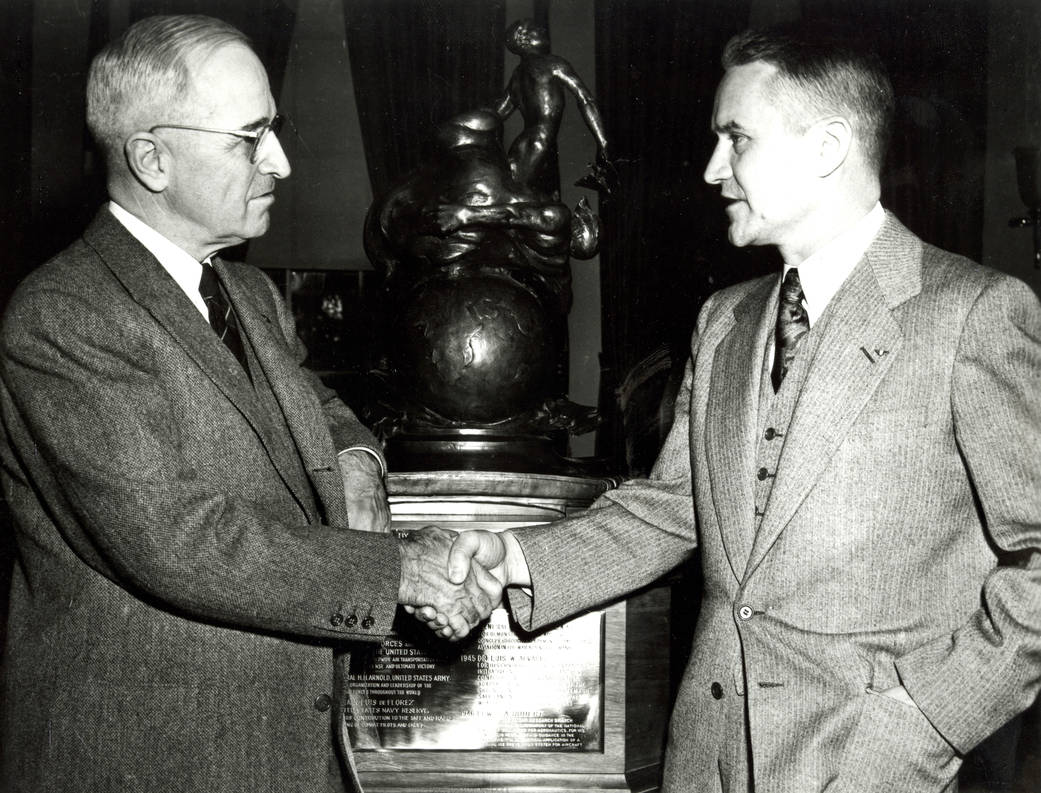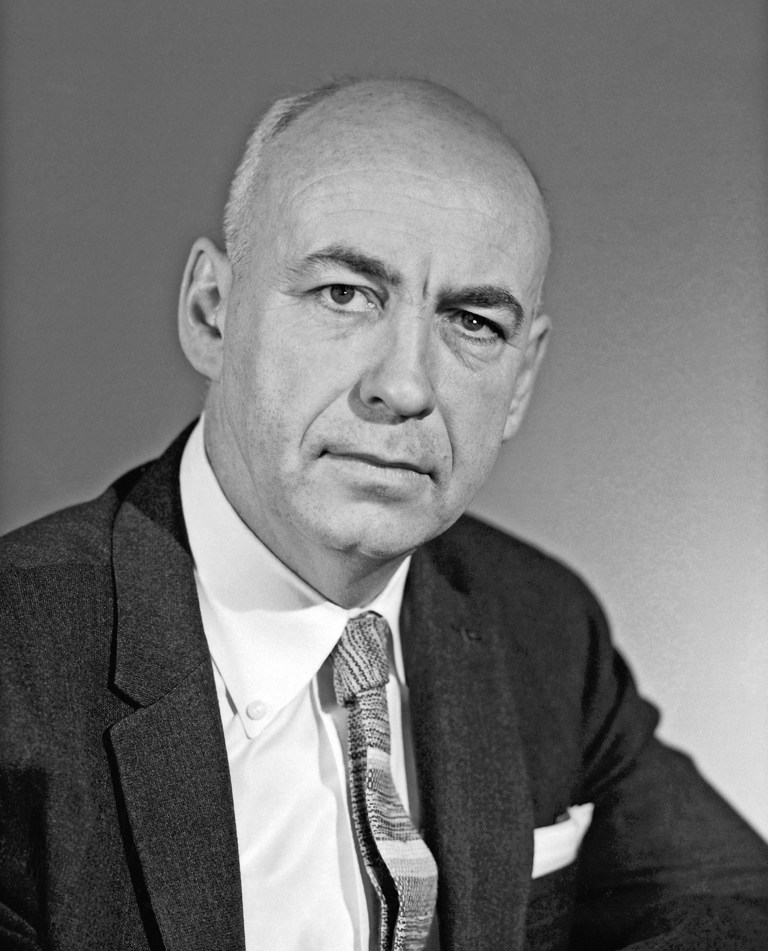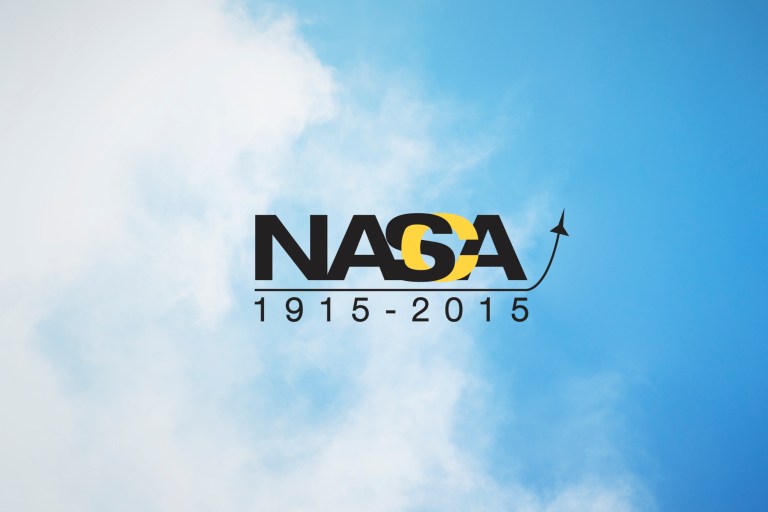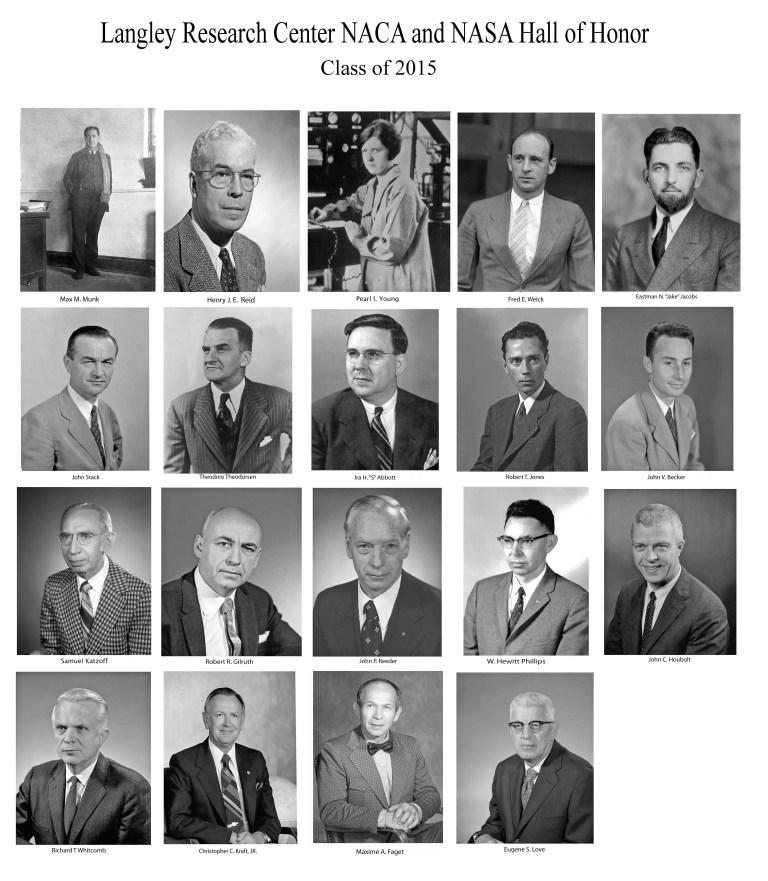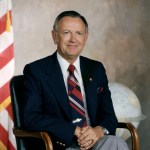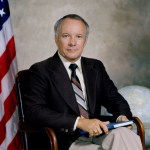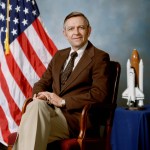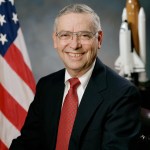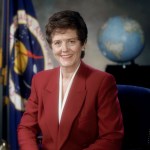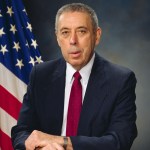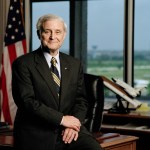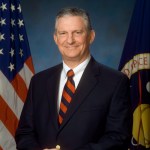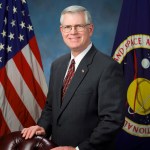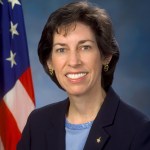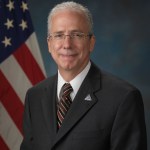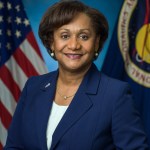
Robert R. Gilruth
NACA Engineer, Langley Aeronautical Laboratory, Assistant Director, 1952-1958, Space Task Group Director, 1958-1961, Johnson Space Center Director, 1961-1972
Robert R. Gilruth was born in Nashwauk, Minnesota, on October 8, 1913, to two schoolteachers. But he did not intend to become an educator. “I was going to be something else,” he said. “I was going to build something, [but] I wasn’t sure what.” Engineering seemed an obvious choice. During childhood he built rubber-band powered model airplanes, eventually designing his own. Gilruth also built boats and even a radio but found “the airplane … much more fascinating.” He eventually became so interested in aviation, aeronautics, and aerodynamics that he sought books on the topics but he “couldn’t find much … on those subjects.” Feature articles in American Boy and Popular Mechanics satisfied his desire to learn more.
He learned about the National Advisory Committee for Aeronautics (NACA) after reading an article in the Saturday Evening Post. “I couldn’t believe my eyes,” he recalled, “that there was a place like that in this country!” He promptly sent a letter asking for information on airfoils to improve his models. Eventually Gilruth decided his “goal [was] to design airplanes” and to make “advances in the design of airplanes and ability of airplanes to fly better.” He wanted to work in “a wind tunnel or in flight research” at the NACA Langley Field, the center of aeronautical research in the United States.
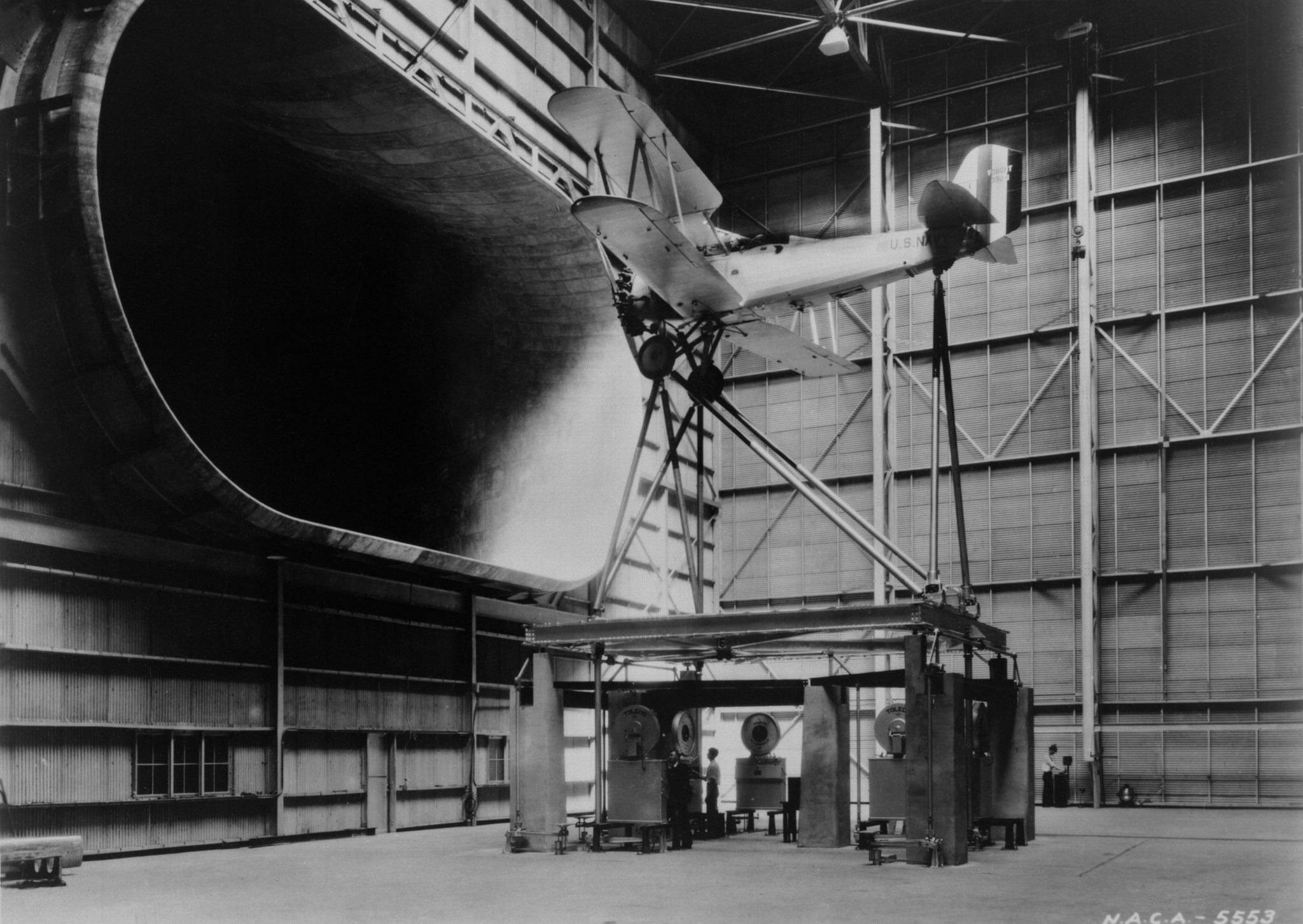
Because his family could not afford to send him away to college, he attended a nearby junior college where he took classes from an engineer, Lewis Rodert, who Gilruth later worked with at NACA. Rodert received the Collier Trophy in 1946 in recognition of his outstanding achievements in developing a method to de-ice planes. While in Minnesota he taught aeronautical engineering and a course on the “principles of flight.” Gilruth transferred to the University of Minnesota, which had recently begun offering courses in aeronautical engineering. When Gilruth graduated in 1935, workers across the country were struggling to find employment, and not one of his seventeen classmates received job offers in aviation.
He chose to stay at the university where he accepted a research fellowship and began working on his master’s degree, which influenced his work at NACA and NASA. He worked with Professor Jean Piccard on several projects that had a lasting impact on his career. Piccard, who had joined the faculty as a lecturer in 1936, had an interest in using high-altitude balloons to study cosmic rays. In his studies Piccard relied on blasting caps, which Gilruth used to launch rockets from NACA’s station on Wallops Island, Virginia. Piccard’s inventions and studies made flying men in space possible, and more than twenty years later, Gilruth applied what he had learned from Piccard’s pressurized high-altitude gondola flights to the requirements to fly an astronaut safely inside the Mercury capsule. He also spent time working for Pilot Roscoe Turner and helped to design his racing plane, the Laird-Watt. That endeavor, Gilruth recalled, was “on the frontier of aviation … and I made good use of that experience when I went to work for NACA.”
Gilruth’s final project for his master’s was ambitious, and the department head told him his idea was “too tough.” Nevertheless, he persisted. He looked at the impact of putting propellers on the wing tips of an airplane to improve flight and tested his design in the four-foot wind tunnel he built. The improvements he noted were “rather small,” so he learned that “it wasn’t worth making an airplane that way.” In December 1936, Gilruth received a letter from the NACA and learned that he had been offered a junior engineer position.
On January 4, 1937, he reported for duty at Langley in Hampton, Virginia, where he found himself sitting at a desk with no assignment. After a week, Hartley Soulé noticed Gilruth needed something to do, other than reading NACA reports, and asked him to work on his project, the flying and handling qualities of airplanes. At that time, there were very few aviation manufacturing standards and little quantitative data about planes. In the past, Gilruth recalled, the measurements of a good flying plane were purely anecdotal. “A pilot would take an airplane up and tell you, ‘Oh she’s great,’ or ‘It’s too quick on the controls,’ or ‘It’s too sensitive, or too sluggish.’ You had to go along with this guy’s sort of the seat-of-the-pants opinion, and one pilot would say one thing and another would say another. And they’d have a bunch of pilots, and then they’d try to take the center of gravity of opinion.”
Aircraft manufacturers and the military looked to NACA “to define the characteristics that make an airplane safe to fly, easy to fly, and accurate to fly.” Gilruth flew with NACA test pilot Mel Gough, took notes during these flight tests, and measured them against data from the onboard instruments. His final report, “Requirements for Satisfactory Flying Qualities of Airplanes,” received numerous accolades. The British were so impressed with his findings that they sent engineers to Virginia to speak with him; the Army Air Corps and Navy used the report as a baseline for accepting airplanes from manufacturers. Gilruth recalled that the interest in his research “helped my career a great deal with the boss in Washington and with the people at the lab.”
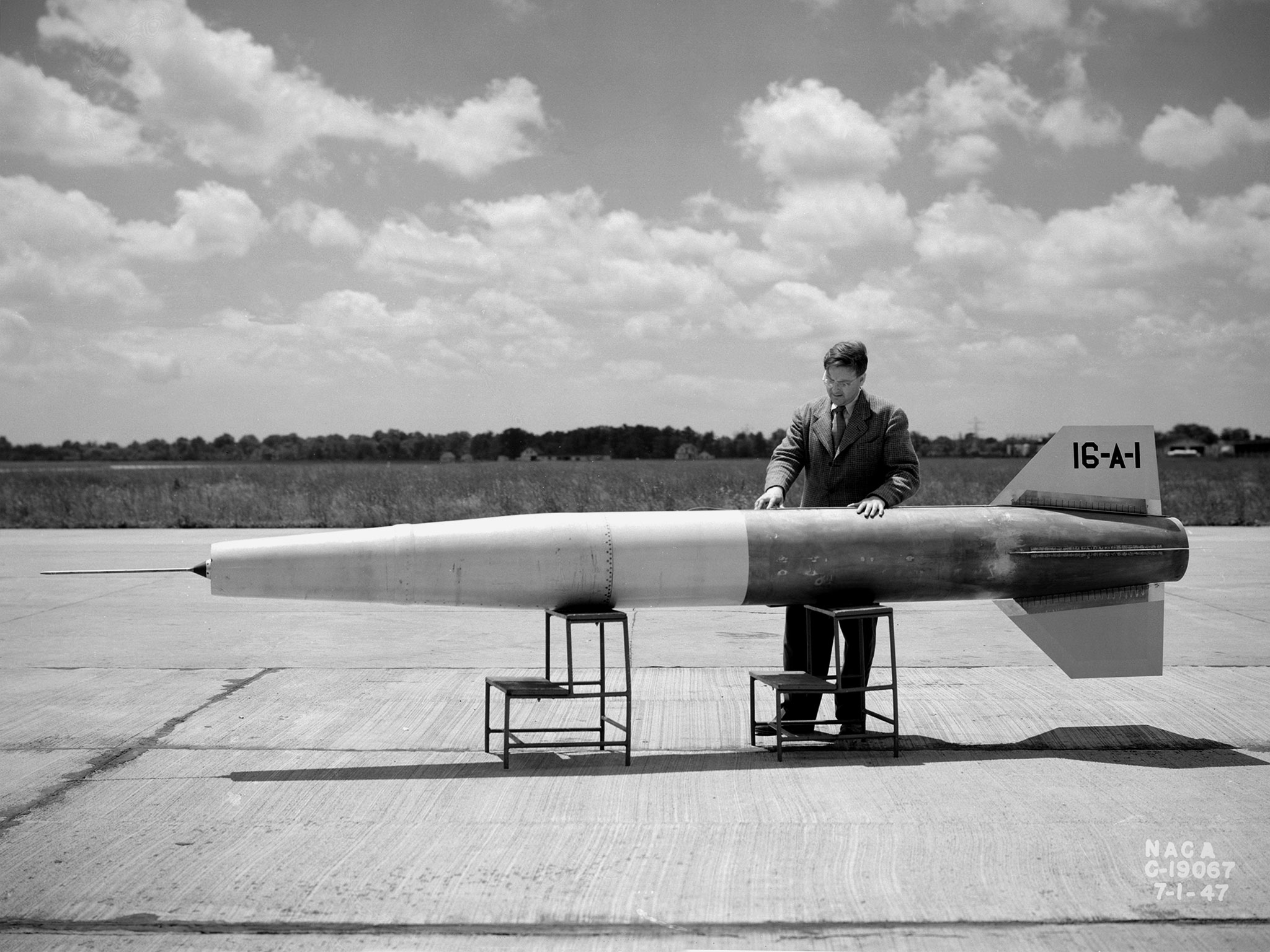
In 1945, NACA tasked the 31-year-old with developing a missile testing site, which became a missile research range, on nearby Wallops Island. As chief of this new range, he discovered what it meant to be a manager and the “new world of budgets, land acquisition, hiring, recruiting and operating with other agencies and companies.” The remoteness of the location enabled his team, the Pilotless Aircraft Research Division (PARD), to test and learn what happened to wings, re-entry bodies, controls, and ailerons at supersonic and transonic speeds. Wind tunnels could not provide this sort of aerodynamic data. Engineers knew what happened when bodies flew below the speed of sound, “but nobody had an idea what happened going through it.” Thanks to PARD’s work on rocket models, including a model of the X-1, and earlier transonic research, test pilot Chuck Yeager broke the sound barrier in 1947.
Gilruth’s career continued to change as research at NACA evolved. Engineers began looking to develop structures that could survive the speed and heat of hypersonic flight and came up with new ground facilities to test hardware and materials prior to flight. All this occurred under Gilruth’s watchful eye as assistant chief of research and later assistant director of Langley.
“The launch of Sputnik in 1957 had changed the thinking of all of us at the NACA….many of us started thinking intensively about manned satellites of one kind of another.”
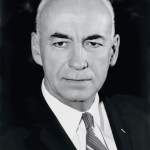
Robert R. Gilruth
NACA/NASA
His focus changed in the fall of 1957, when he watched “the sunlight reflecting off of the Sputnik 1 carrier rocket as it passed over” his home. He later recalled, “It put a new sense of value and urgency on the things we had been doing.” Gilruth explained, “The launch of Sputnik in 1957 had changed the thinking of all of us at the NACA. … At that time, many of us started thinking intensively about manned satellites of one kind of another.” A month later, when the Soviets put a dog in space, he thought, “My God, we better get going because it’s going to be legitimate program to put a man in space.”
Gilruth went to Washington, DC, to work with NACA’s director and others from the NACA laboratories on how the United States could launch a man in space, but he believed that the “problems of putting a man in space … were pretty well solved before we ever really started the Mercury Program.” Scientist-astronaut Joseph P. Allen said that “the Mercury capsule was already on [spacecraft designer Caldwell C. Johnson’s] drawing board just nine months after the launch of Sputnik and still several months before the formation of NASA.” The President’s Scientific Advisory Committee (PSAC) came to Langley to see the work engineers were doing at Wallops. More than any other organization, Gilruth believed that PARD was “the key group in spearheading NACA into NASA.” And he later said, “I had confidence that if anybody could put a man in space, we could.” He believed that their work at Wallops, more than anything else, led to NACA’s evolution into NASA.
In the summer of 1958, Gilruth, along with about 20 other employees, drafted plans and a budget for a new federal agency they anticipated being established, the National Aeronautics and Space Administration. He oversaw the “man-in-space program” which came up with the basic concepts for putting a man in orbit and presented the idea to the PSAC. In August he shared the plan with the Select Committee on Aeronautics and Space Exploration, established by the House of Representatives in 1958 to study the possibilities of exploring space.
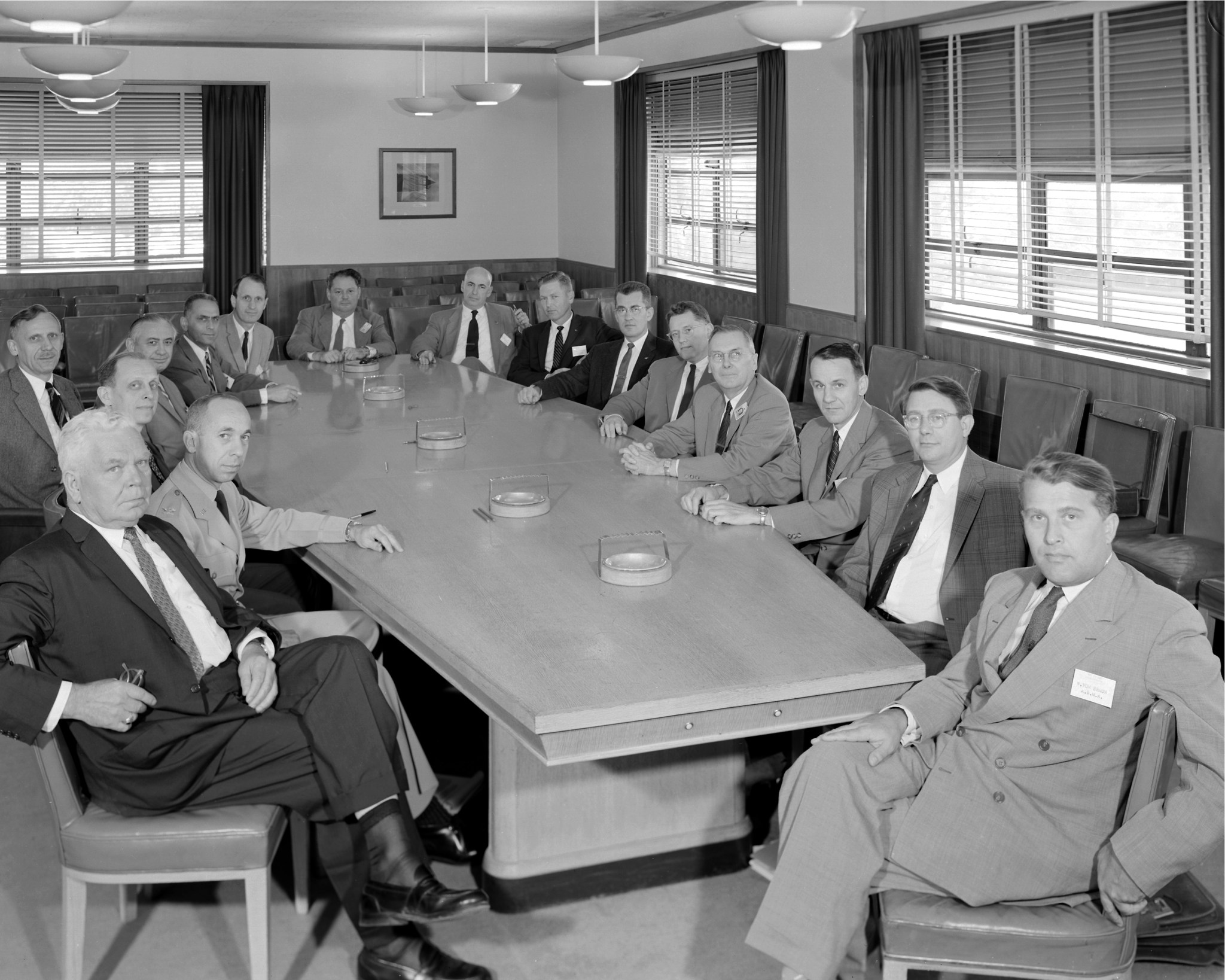
Operations at NASA began on October 1, 1958, and two hours after hearing Gilruth’s presentation on how to place a man in space, T. Keith Glennan, NASA’s first administrator, told Gilruth to “get on with the project.” Back home at Langley, Gilruth began to put together the Space Task Group (STG), which initially consisted of 36 people but eventually grew to 500. To accomplish the goal of sending an astronaut into orbit, the STG had to tackle many problems including selecting and training astronauts, building a spacecraft, establishing a tracking network, and putting a recovery team in place. NASA Deputy Administrator George M. Low remembered that the STG operated “extremely well” thanks to Gilruth’s leadership. Only a few years after Gilruth established the Space Task Group, the team succeeded in launching astronaut Alan B. Shepard into a suborbital space mission in 1961.
Soon after that successful spaceflight that sent Shepard into space for fifteen minutes, President John F. Kennedy announced that the United States would land a man on the Moon and return him safely by the end of the decade. Gilruth, then on a plane, remembered being “aghast” at the president’s statement, even though he was aware of the plan. He had personally advised the president of the United States on the matter. Still, he was overwhelmed because he realized that going to the Moon would be much more complicated than putting a man in orbit, a goal which they had not yet accomplished.
A new NASA center would be needed, and in 1961 the space agency decided to establish the Manned Spacecraft Center in Houston with Bob Gilruth as its center director. He, along with other Space Task Group employees, had to relocate from Virginia to Texas. But that was just the beginning; center employees had to select a contractor for the Apollo spacecraft, plan and build the center, and decide how best to travel to the Moon. Hundreds, if not thousands, of decisions had to be made. “The whole period was one … which moved very fast, but it was not exactly,” he admitted, “what you’d call a calm and serene period.” Even James S. McDonnell, head of the McDonnell Aircraft Corporation which built the Mercury spacecraft, told Gilruth, “I don’t see how you can possibly get done all the things you have to do.”

Nearly overnight the Manned Spacecraft Center went from a single program, Project Mercury, to three. Gilruth oversaw the remaining Mercury flights with his “number one priority” placing astronaut John Glenn into orbit. He also had to get the Gemini “rolling,” a follow-on program to Mercury to ensure that the Apollo Program would succeed. This NASA program would prove that astronauts could rendezvous and dock in space, walk in space, and stay in space for long periods of time. He also had to oversee the design and construction of a new space center and solve the problem of how to land a man on the Moon. In July 1969, the United States accomplished that goal when Neil A. Armstrong took his first step on the Moon. This success was due in part to Gilruth’s leadership style. It was his approach to Project Mercury, which NASA managers adopted and effectively used, that ensured the success of manned spaceflight in that decade. “There is no question,” George Low concluded, “that without Bob Gilruth there would not have been a Mercury, a Gemini, or an Apollo Program.”
Gilruth remained center director until early 1972, when he took a position with NASA Headquarters. He retired in 1973 and went on to serve as consultant for the space agency. In 2000, he passed away at the age of 86 but to this day remains known as the father of NASA’s human spaceflight programs.
Visit the NASA Oral History Collections to read oral histories with NASA’s Johnson Space Center Directors and others across NASA.
























